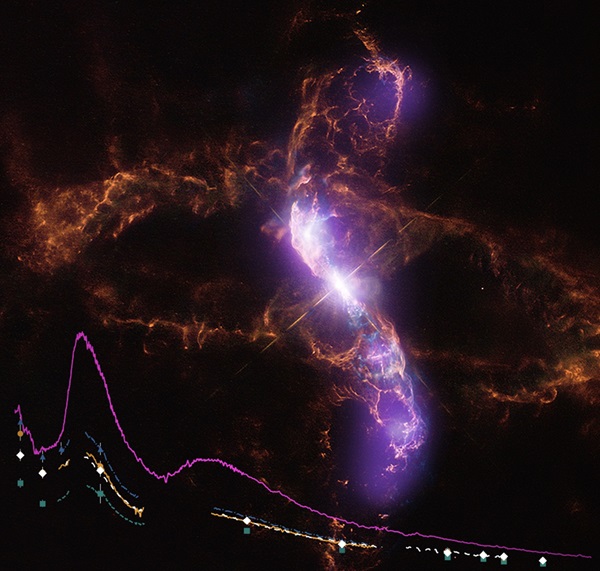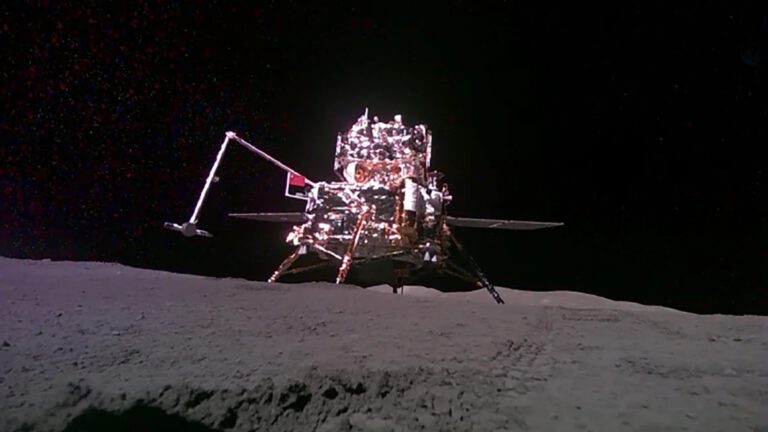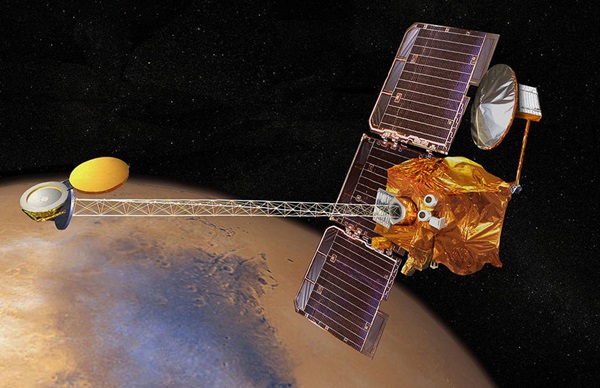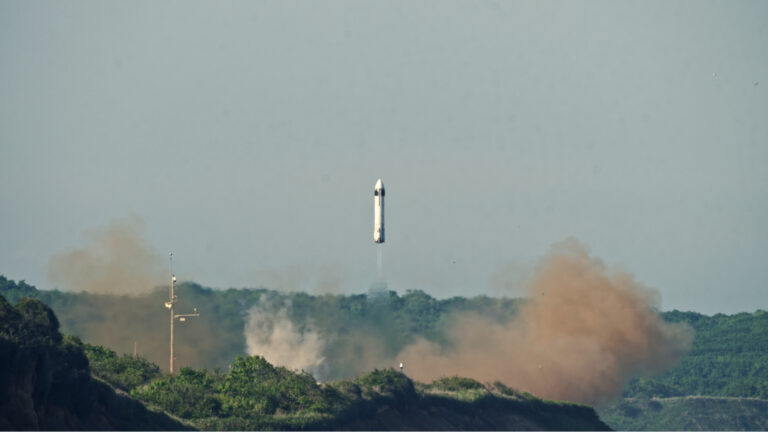Chaotic rivers of red and purple appear in this false-color composite image of the eclipsing binary star system R Aquarii, located some 650 light-years from Earth in the constellation Aquarius. Studied by NASA’s Stratospheric Observatory for Infrared Astronomy (SOFIA) — an airplane equipped with an infrared telescope — the intriguing stellar pair is helping astronomers learn more about how dust accretes onto stars.
According to a NASA release, in 2018 and 2019, SOFIA recorded a stellar remnant called a white dwarf just beginning to eclipse its companion, a Mira variable (a type of pulsating red giant), as they orbit one another. These eclipses occur every 43.6 years and the current event has been ongoing since 2018. Researchers note that this system is unique because the stars’ periastron, or closest point to each other in their orbits, occurs during the eclipse. They have yet to reach that point, which will occur 2023.
This composite photo shows the white dwarf (although the star itself cannot be seen) accreting dust escaping the Mira variable (the bright white point at the center). As it pulls in dust, the white dwarf also spews out a jet, shown in violet. In the middle of the image, the glow of the Mira variable is surrounded by rust-colored rings — evidence of past explosions. Also overlaying the composite are plots showing the energy emissions from the star system, which have decreased over time. The green, white, orange, and blue data are from SOFIA, while the purple is from the Infrared Space Observatory, which observed R Aquarii in 1996, long before the recent eclipse began dimming the system.
Researchers will continue to study the star system as the eclipse proceeds and the stars reach periastron to determine how the objects’ orbits impact the amount of the Mira variable’s blown-off dust that the white dwarf pulls in. This, in turn, can inform them about other binary star systems that could also be experiencing similar phenomena.
SOFIA’s ability to record such information is expected to come to an end no later than Sept. 30, 2022, when the observatory is retired. It has been fully operational since 2014, and is composed of a Boeing 747SP aircraft modified to carry a 2.7-meter (106-inch) reflecting telescope. It was created by NASA and the German Space Agency.










